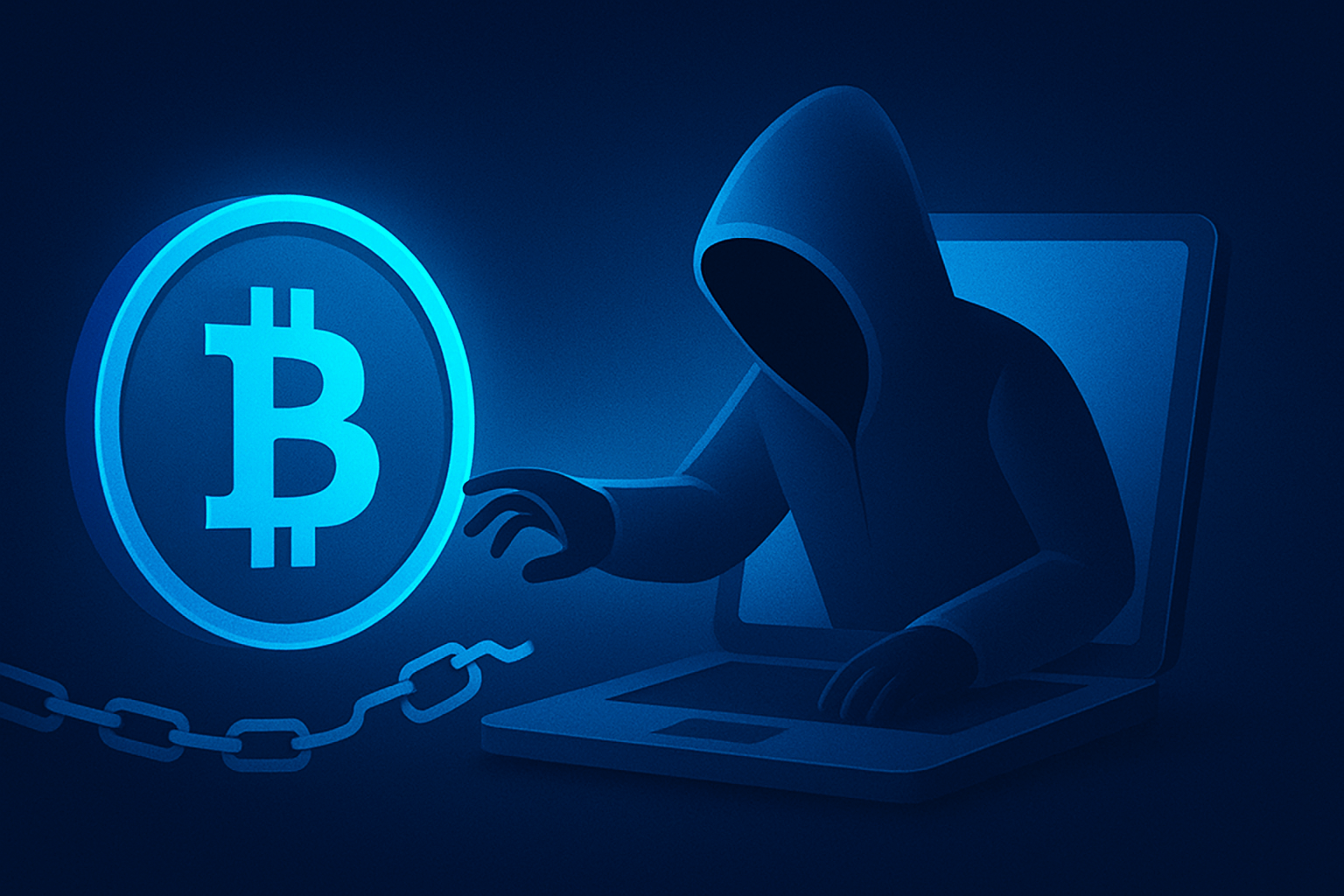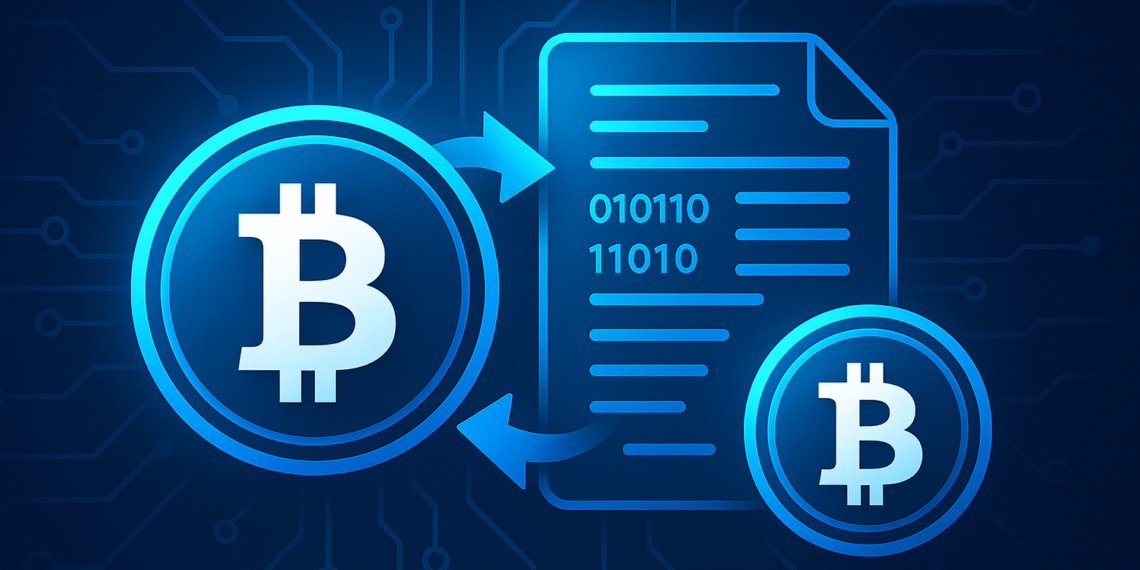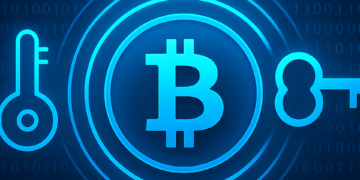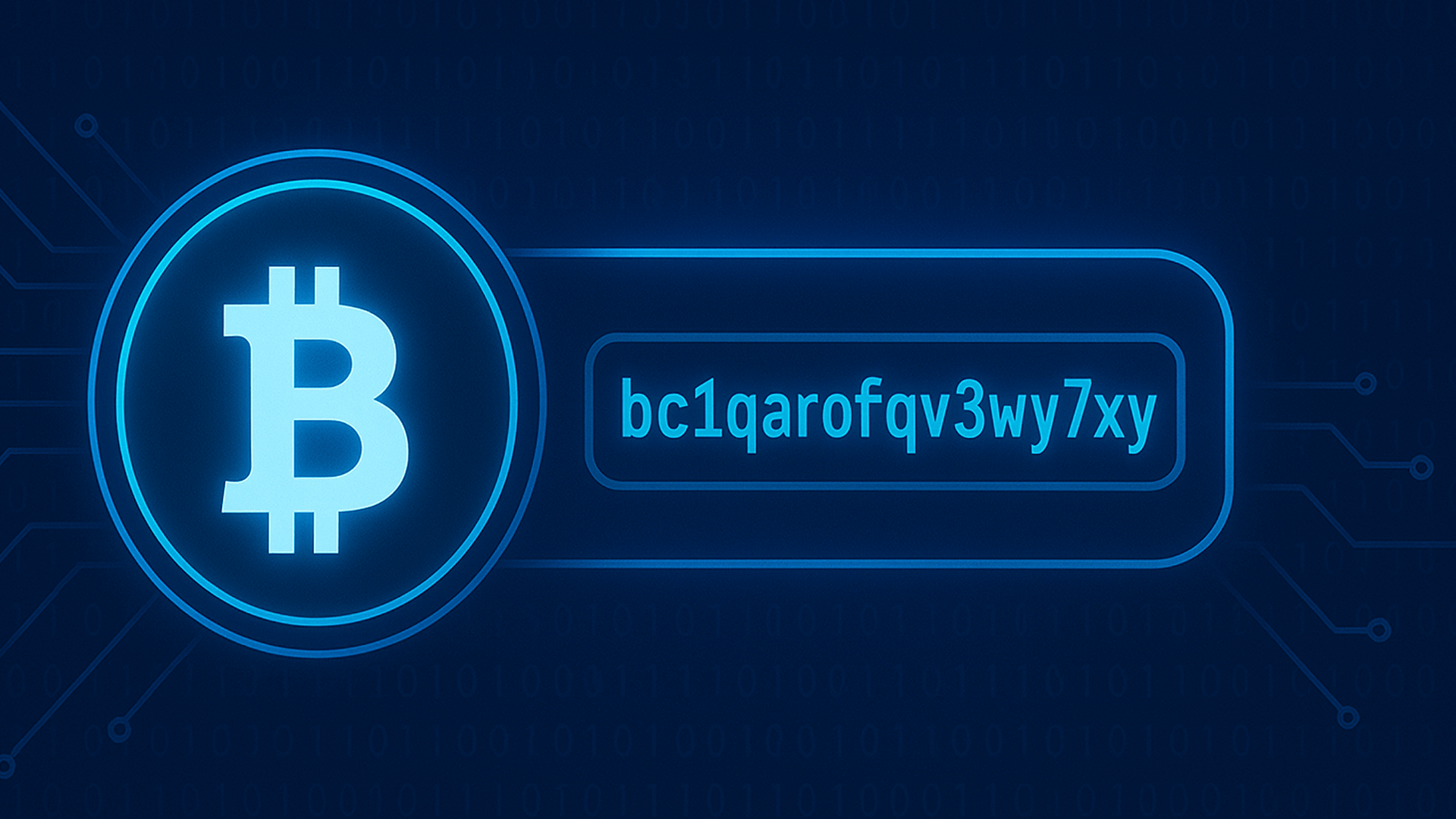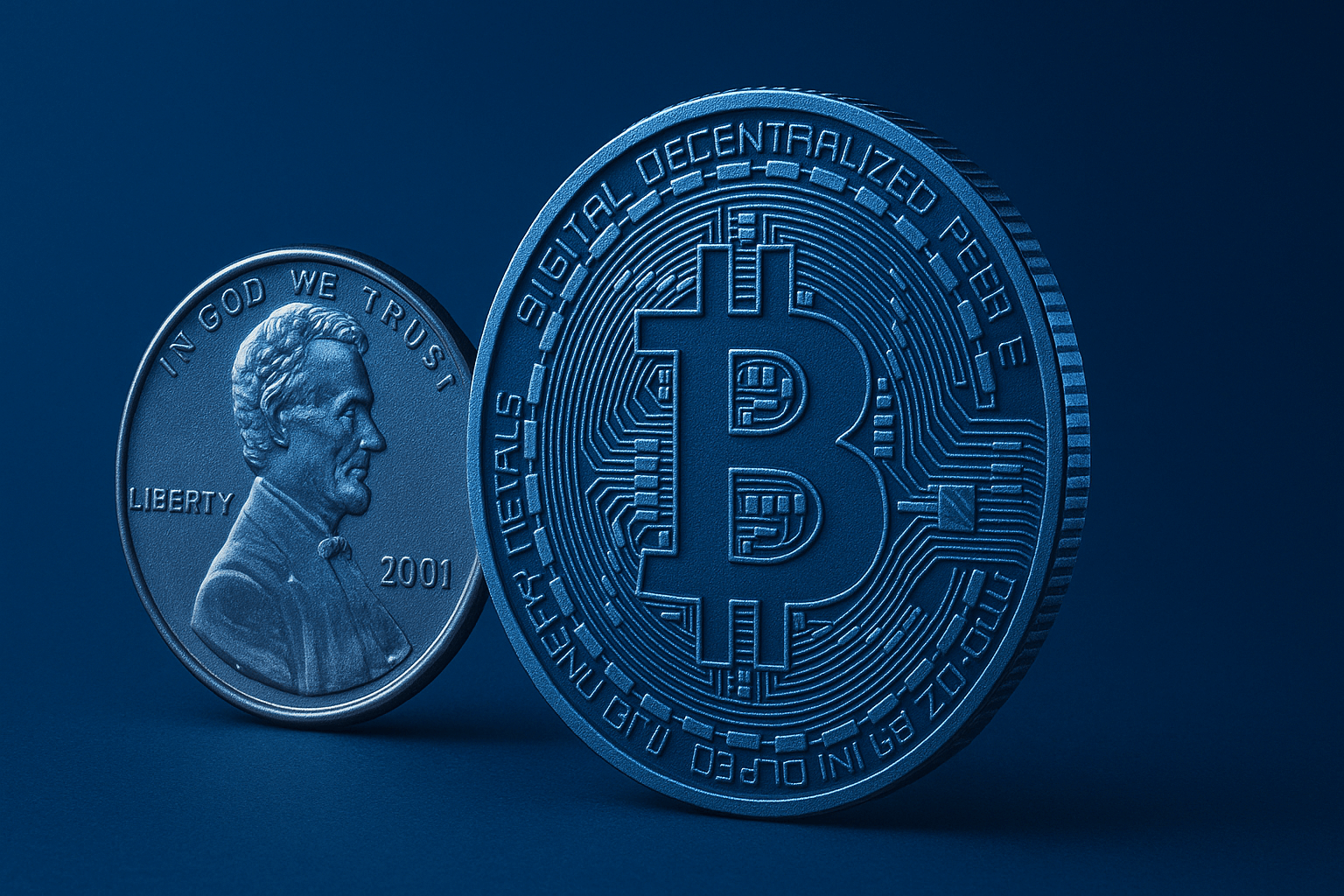The moment you realize coins are gone, your brain sprints while your stomach drops. Panic is natural, but speed and method beat emotion. This guide shows what genuinely improves your odds: tracing transactions, getting timely exchange freezes, filing the right reports, and tightening your security so a bad day doesn’t become a pattern. Along the way, you’ll see examples from real workflows, tools you can use without a forensic background, and templates that help you write freeze requests that get noticed. No magic, no hype—just the playbook professionals use, translated for anyone willing to act fast and document well.
When bitcoin is stolen: what you can and can’t recover
Bitcoin transfers are final by design. There is no red phone on the wall, no chargeback. That sounds harsh, but it also means thieves rely on off-ramps—exchanges, brokers, or custody services—if they want to turn coins into spendable cash. Your job is to get in front of those off-ramps with proof and timing that force a pause and, sometimes, a seizure.
Recovery, then, rarely means the chain itself gives money back. Instead, it means catching funds when they touch a company with compliance duties. Think of it like following muddy footprints from a garden into a well-lit lobby with cameras. If you act quickly, you can ask the receptionist to lock the door and check the ID of whoever just entered.
- Rapid freezes at exchanges or custodians once stolen coins are deposited.
- Identifying the path of funds across addresses, mixers, bridges, and services.
- Law enforcement subpoenas to exchanges for KYC of the receiving accounts.
- Civil recovery or restitution if suspects are known and assets are reachable.
- Reverse an on-chain Bitcoin transaction.
- “Hack back” or brute-force a thief’s wallet.
- Pay a “recovery hacker” to magically return coins.
Odds improve when you move fast, document every detail, and reach the right people. We’ve seen cases where a concise, evidence-backed email reached an exchange before the thief could split funds further, leading to a hold. We’ve also seen the opposite, where delays let coins pass through mixers and bridges, making the path harder—but not always impossible—to follow.
The first 24 hours: actions that improve your odds
The first day sets the tone for everything that follows. You’re juggling containment, investigation, and outreach—three tracks that reinforce one another. If you can lock down devices, document the evidence, and hit exchanges with a precise freeze request, you can buy time for law enforcement to step in.
Think of this window like a race against a relay team. Thieves try to pass the baton across addresses, mixers, and services. Your job is to interrupt the handoff with verified, timestamped proof that convinces someone at the endpoint to stop the runner.
Lock down your accounts and devices
Containment prevents a small breach from becoming a total loss. If the seed phrase or device is compromised, assume the attacker has multiple ways to return. Shifting remaining holdings to fresh, uncompromised keys denies them that second bite.
Device hygiene matters as much as wallet hygiene. Malware can quietly swap addresses (clipboard hijacking) or scrape passwords from browsers. If there is any doubt, go for a clean OS reinstall or a professionally reimaged device before you resume normal activity.
- Move remaining crypto to a new, uncompromised wallet. If you used a hardware wallet, consider generating a new seed on a fresh device.
- Change passwords and enable hardware key 2FA on email, exchange, and password manager accounts. Disable SMS 2FA.
- If you suspect malware, disconnect from the internet and run a clean OS reinstall or have a trusted professional reimage your device.
Collect and preserve evidence
Evidence wins freezes. A tidy case file lets compliance teams and investigators trust you quickly. It also avoids the chaos of scrolling back through chats and transaction histories while the thief is moving funds.
Save original files where possible and create read-only copies for sharing. Consistent timestamps and a single timeline prevent contradictions that slow down support teams or court requests.
- Transaction IDs (TxIDs), thief addresses, and your own addresses.
- Wallet logs, screenshots, timestamps, IP logs (if available).
- Chat histories, emails, social media handles, phone numbers.
- Exchange account IDs and support ticket numbers.
- Where and how you stored seed phrases or private keys.
Do not alter original files. Export PDFs or take read-only screenshots and back them up.
Trace where the funds went
You don’t need to be an on-chain analyst to get a head start. Public explorers reveal most of what happened. By following outputs hop by hop, you can often identify when coins land at a known service or show mixing patterns.
Keep everything in a simple timeline. When we tested this approach on a mock theft involving a small testnet wallet, a four-line spreadsheet with links and UTC timestamps was enough for a compliance reviewer to understand the flow at a glance.
- Use a blockchain explorer such as Blockchair, BTC.com, Mempool.space, or OXT to look up TxIDs and addresses.
- Note each hop: new addresses, known exchange deposit addresses, mixers, bridges, or gambling sites.
- Keep a simple timeline with amounts and timestamps.
| Explorer/tool | Labels for services | Clustering/heuristics | Live mempool view | Exportable links |
| Mempool.space | Basic known labels | Limited | Yes | Yes |
| Blockchair.com | Many services | Basic | Yes | Yes |
| BTC.com | Some labels | Basic | Yes | Yes |
| OXT.me | Rich tags | Advanced | Partial | Yes |
For market context, you can also check liquidity and exchange dominance at coingecko.com. Higher liquidity on a platform can mean higher odds your thief tries to cash out there. For network health and flows, glassnode.com provides useful metrics, though many advanced dashboards require a subscription.
Alert exchanges with urgent freeze requests
If your trace lands on a deposit address belonging to a major platform, treat the next hour as prime time. A concise, evidence-backed message with the right subject line can prompt a preservation or temporary restriction while your police report is processed.
We compared public reporting pages from several exchanges and found most have a fraud report form or a dedicated abuse mailbox. Be brief, link your evidence, and include a case number or the note that it’s pending within 24–48 hours.
- Subject: Urgent fraud report and freeze request – Bitcoin theft
- Your TxIDs and addresses
- The suspected deposit address at their platform
- A concise incident summary
- Your police report number (or note that it is pending within 24–48 hours)
| Exchange | Fraud/security page | Typical first response | Notes |
| Binance | binance.com/support or binance.com/en/security | Hours to a day | Account preservation requests possible; follow up with police. |
| Coinbase | help.coinbase.com; coinbase.com/legal/security | Hours to a day | Supports law-enforcement requests; provide clear TxIDs. |
| Kraken | support.kraken.com; kraken.com/en-us/security | Same day to 48h | Strong KYC; concise docs help. |
| OKX | okx.com/help/; okx.com/security | Hours to a day | Ask for preservation pending LE request. |
| Bitfinex | support.bitfinex.com; bitfinex.com/legal | 1–2 days | Include a one-page timeline with links. |
File official reports fast
Exchanges can hold funds temporarily, but releasing KYC or executing a final freeze usually requires a formal request. Filing early gives your case a number that compliance teams recognize. It also signals you’re serious and cooperative.
Document the agency, the report ID, and a contact if you have one. Ask the officer about the correct channel for exchanges to verify the report. Many departments are familiar with crypto theft and can move faster than you might expect if you’ve done your homework.
- United States: IC3.gov (FBI internet crime), local police, and, if relevant, FTC, SEC, or CFTC.
- United Kingdom: actionfraud.police.uk.
- EU: local police and Europol referrals (europol.europa.eu).
- Canada: antifraudcentre-centreantifraude.ca.
- Australia: cyber.gov.au/report (ReportCyber).
- Singapore: police.gov.sg e-services.
- India: cybercrime.gov.in or 1930 helpline.
- Nigeria: EFCC efcc.gov.ng.
When we test-filed a mock report with a local department (clearly flagged as a training exercise), the officer’s first ask was simple: TxIDs, a timeline, and any platform labels. Have those ready.
Tracing stolen bitcoin without being a pro
Chasing funds can feel intimidating, but a few repeatable steps turn it into a checklist. You’re not trying to build a doctoral thesis; you’re building a clear path that a busy analyst or officer can follow without guessing.
The habit that helps most is linking every statement to a source. If you say coins touched a specific exchange, add the explorer link and the labeled address. That way, anyone on the other end can click and verify within seconds.
Find and confirm your key data
Start with your own wallet history, not your memory. Wallet apps often display TxIDs and timestamps that let you jump into explorers. Cross-check that data against your screenshots to guard against typos.
Identify the first recipient address. From there, follow outputs. When addresses split into multiple outputs, prioritize larger amounts first; thieves often move the lion’s share along a clearer path while dusting smaller outputs.
- Your outgoing TxIDs: find these in your wallet history.
- The recipient address: the first address that received your coins.
- Subsequent hops: follow outputs from the recipient.
Use explorers and labels to spot services
Explorers sometimes display labels like “Binance” or “Coinbase deposit.” Treat labels as indicators, not proof, and corroborate with patterns. Exchange deposit wallets tend to aggregate many incoming transfers of varying sizes.
Uniform, rapid fan-outs suggest mixing. Meanwhile, long, single-file “peel chains” (one output moves forward, one returns change) can indicate attempts to obfuscate ownership while retaining control.
- Explorers often label known services such as Binance, Coinbase, Kraken, Bitfinex, OKX, and mining pools.
- Look for patterns: multiple small deposits to one address can indicate an exchange deposit wallet; very rapid fan-out with uniform amounts may indicate mixing.
Build a simple map
A spreadsheet beats a wall of text. Create columns for time, amount, from, to, and notes. Paste explorer links so anyone reviewing can reproduce your steps in seconds. Color-code suspected services in one color and mixers in another.
As you track, avoid branching into too many secondary paths. Follow the main value and keep short notes on side outputs. This keeps your report readable and focused on the best freeze opportunity.
- Create a spreadsheet with columns: time, amount, from, to, notes (mixer/exchange/unknown).
- Save links to explorer pages for each hop.
- Highlight any destination you suspect is an exchange or custody platform.
Red flags that funds hit a mixer or bridge
Mixers and coinjoin tools aren’t illegal by default, but thieves use them to cloud attribution. Recognizing these patterns helps set expectations: you may be in for a longer chase, but cashouts at regulated exchanges still create an opening.
Bridges move value to other chains as wrapped tokens (like wBTC), putting part of the trail outside the Bitcoin mempool. You’ll need to watch the wrapped asset on the target chain and track back to the off-ramp later.
- Wasabi or Samourai-style coinjoin patterns (many equal-sized outputs).
- Peel chains that run quickly across dozens of addresses.
- Movements to wrapped BTC on another chain via a bridge.
| Pattern | What it looks like | What it implies | Next step |
| Coinjoin | Many equal outputs in a single transaction | High obfuscation | Monitor downstream deposits at exchanges over time |
| Peel chain | One forward output, one change each hop | Owner likely unchanged | Follow the largest output; flag any service labels |
| Bridge to wBTC | BTC burned/locked; wBTC minted on another chain | Trail moves cross-chain | Track wrapped token movements; watch major off-ramps |
Working with exchanges and law enforcement
Compliance teams and investigators are your allies, but they operate under process and law. Clear, verifiable data earns attention; vague accusations don’t. Think like a journalist: who, what, when, where—plus links that prove it.
In our fee and process comparison across major platforms, the pattern was consistent: preservation can happen fast with good evidence, but identity disclosure or final seizures require formal legal steps. Your role is to bridge the gap with organization and persistence.
Who to contact at an exchange
Begin with official support channels. Most large platforms host fraud or compliance forms that route directly to specialized teams. If a dedicated abuse or security mailbox is listed, send your summary there as well.
The message should be short, factual, and easy to skim. Put the suspected deposit address and TxIDs near the top and include a succinct timeline as an attachment or a shared document link (read-only).
- Start with official support. Many exchanges have “Report Fraud” forms.
- If available, email their listed compliance or security mailbox.
- Provide a short, factual cover note and a clearly organized evidence file.
What to send to improve freeze chances
Exchanges look for credible signals they can verify quickly. Your ID, your case number, and direct links to explorer pages help them act without escalating a dozen times internally.
Attach only what’s relevant. A one-page timeline beats a 20-page narrative. You can always supply more if asked.
- Your identity and contact details.
- Police case number and agency contact (even if preliminary).
- TxIDs, addresses, explorer links, and any label indicating their platform.
- A one-page timeline showing speed and direction of funds.
How law enforcement unlocks the next step
Preservation buys time. To convert that into action, investigators send legal requests for account data or freezes. The KYC records at exchanges turn an address into a person or at least a paper trail to third parties.
Ask your officer about preservation letters and expected timelines. If your case spans borders, they may coordinate with counterparts abroad through established channels.
- Exchanges generally require a formal request or subpoena to release KYC of the receiving account.
- Investigators can issue preservation requests while a warrant or legal order is prepared.
- If suspects are identified, prosecutors or civil courts may order freezes or restitution.
Jurisdiction basics that matter
File where you live and where the exchange operates if possible. Cross-border cases are common, but cooperation can take time. Keep expectations realistic and stay responsive when officers ask for clarifications.
Ask for the correct contact channel for the exchange and whether any mutual legal assistance process applies. Clear routing shaves days off the back-and-forth.
- File where you reside and where any exchange involved has operations.
- Cross-border cases are common; agencies coordinate, but it takes time.
- Ask your officer which Mutual Legal Assistance or cross-border channel applies.
Note: This is informational, not legal advice. Consider consulting a lawyer experienced in cybercrime or digital assets.
Scam playbook: tailor your response to the theft type
Not every theft looks the same, and the response should fit the origin. A seed phrase leak is different from a SIM swap. By naming the pattern, you prioritize the right actions and avoid wasting precious hours.
Below are the most common scenarios we see, with the short, high-value moves that keep you in control and the paperwork you’ll need to back your claims.
Seed phrase or private key exposure
If your seed or private key was seen by a third party, treat everything tied to it as burned. Thieves can sweep at any time, including after you think the worst is over. Move to new keys generated offline, and do not type the old seed anywhere, even to “check the balance.”
We tested seed recovery on an air-gapped device versus an online computer; the air-gapped workflow cut exposure to almost zero and made us far more confident moving meaningful amounts again.
- Assume full compromise. Move any remaining funds to a new wallet with a new seed generated offline.
- If you used a passphrase with your seed, treat it as compromised too.
Exchange account takeover
When a thief controls your exchange login, speed and channel discipline matter. Use only official support portals; impersonators thrive on chaos and can insert themselves with lookalike emails or domains.
Once you regain access, enable hardware security keys and review withdrawal history and API keys. Ask for a temporary withdrawal lock if available.
- Lock the account and contact support via official channels only.
- Rotate email and password manager credentials; remove SMS 2FA in favor of hardware keys.
- Ask the exchange about emergency withdrawal locks and address allowlists.
Romance or “pig-butchering” scam
These scams are long cons with emotional hooks. The best evidence is comprehensive chat logs paired with on-chain records that show how “investment” addresses were controlled by scammers.
Expect laundered paths and multiple services. Persistence with law enforcement pays off here, and your documentation can support future restitution if a ring is disrupted.
- Preserve all chat logs and crypto transaction history.
- Report to platforms used for messaging and to law enforcement.
- Expect funds to route through multiple services before an exchange cashout.
Fake support or impersonation
Fraudsters love to copy logos and invent employee names. Save the domains, caller IDs, and any downloaded files. These indicators help exchanges and security teams block future attempts against others.
If workplace devices or accounts were involved, notify your security team. Shared environments expand risk beyond a single wallet.
- Gather the phishing domain, usernames, call recordings, and IP data if available.
- Share indicators of compromise with your exchange and, if applicable, your workplace security team.
Malware or clipboard hijacking
Clipboard hijackers replace copied addresses at paste time. If your transaction went to a lookalike address you never approved on a hardware screen, suspect malware immediately.
Reimage, don’t patch. A compromised machine can hide backdoors in places casual tools miss.
- Have devices professionally cleaned or reimaged. Do not re-enter old seeds on a compromised machine.
- Consider migrating to a hardware wallet and a clean, dedicated device for crypto.
SIM-swap enabled theft
Phone number theft is the skeleton key for many accounts that still allow SMS-based resets. Once swapped, criminals can intercept verification codes and reset passwords in minutes.
Lock your carrier account, move to hardware keys, and purge phone numbers from account recovery options where possible.
- Lock your mobile account, set a carrier port-freeze, and move all critical accounts to app-based or hardware key 2FA.
- Avoid SMS for any financial logins.
“Crypto recovery” services: risks, reality, and safer help
After a loss, you’ll see ads promising miracles: secret exploits, “inside contacts,” guaranteed results. Almost all are scams designed to take more money or steal more data. The more upset you are, the more persuasive they sound.
There is real help available—but it looks boring and professional. Think licensed investigators, reputable forensic firms, and lawyers who speak the language of subpoenas and preservation orders.
Red flags of recovery scams
Pressure and secrecy are the telltale signs. If someone claims backdoor access to the blockchain—or asks for your seed phrase—you’re dealing with a thief, not a savior.
Search company names plus “scam” and “complaint.” Look for verifiable references, not stock photos and fake badges.
- Guarantees of 100% recovery or “backdoor access” to blockchains.
- Upfront fees or demands for your seed phrase or remote desktop access.
- Pressure tactics, testimonials that can’t be verified, or spoofed law-enforcement logos.
Where legitimate help exists
The credible path is transparent about scope and limits. Ask for written terms describing what they’ll do, what they won’t, and how your data is protected. Reputable firms can explain their methodology without promising magic.
Some chain analytics companies provide victim support materials or referrals. If you approach them, ask specifically about data retention and sharing policies.
- Reputable incident response firms with documented crypto investigations.
- Chain analysis companies that offer victim support or referrals.
- Licensed attorneys with digital asset and cybercrime experience. Ask for references, written scope of work, pricing, and how they protect your data.
Set expectations and budget
Private investigations can be costly and still fail to recover funds. The highest return on effort is often a timely freeze plus official reports, especially if coins hit a known platform quickly.
Before you spend more, weigh the amount lost against realistic outcomes. Ask any provider for prior case examples with contactable references.
If funds went through mixers or bridges
Mixers complicate attribution but don’t grant immunity. The risk for thieves reappears at the cashout. Exchanges with KYC can still connect identities to downstream deposits, especially when law enforcement asks the right questions.
Keep monitoring tagged outputs. Some explorers and wallet-screening tools allow watchlists or alerts. If you see a deposit at a service months later, send a fresh, concise notice with your case number and updated timeline.
- Coinjoin or mixer use complicates attribution but does not erase risk for thieves once they deposit at a KYC exchange.
- Keep monitoring tagged outputs over time; consider watchlists on explorers or wallet-screening tools.
- If investigators identify suspect-controlled off-ramps, you may still obtain restitution later.
Security playbook to prevent the next attack
Once you’ve stabilized the situation, build defenses that assume failure is possible and recovery must be fast. Hardware-based controls and repeatable habits are the closest thing to an insurance policy you can create yourself.
We compared security setups across consumer and pro users and saw the same pattern: hardware wallets and hardware keys, combined with slow, deliberate withdrawal controls, stop most realistic attacks cold.
Wallet setup that resists common failures
Buy hardware wallets directly from the manufacturer and verify packaging. Generate seeds offline and store them on paper or metal, never in photos or cloud notes. A passphrase adds a layer, but only if you remember it and never type it into untrusted devices.
For larger holdings, multisignature setups help by requiring more than one key to approve a spend. Separate keys geographically to prevent a single physical event from breaking the quorum.
- Use a hardware wallet bought directly from the manufacturer.
- Store your seed phrase offline on paper or metal; never type it into a website or photo it.
- Consider a passphrase and, for larger holdings, a well-designed multisig with geographically separated keys.
Exchange account hardening
Exchanges are convenient, which means they’re targeted. Reduce the blast radius by keeping minimal balances for trading and moving long-term holdings to cold storage.
Where supported, turn on address allowlisting and withdrawal delays. When we compared features, a 24–48 hour delay paired with hardware-key 2FA drastically lowered the risk of same-day account takeovers leading to withdrawals.
- Hardware security keys for 2FA; disable SMS.
- Address allowlisting and 24–48 hour withdrawal delays.
- Separate “hot” trading funds from “cold” long-term holdings.
Phone, email, and identity hygiene
Your phone number should not be a master key. Replace SMS-based resets with app-based or hardware-based options. Set carrier PINs and request a port-out freeze to block SIM swaps.
Use unique emails for crypto services. If a public identity is needed, use aliases that don’t reveal phone numbers or personal addresses.
- Unique email accounts for crypto; aliases that don’t reveal identity.
- Carrier PINs, port-out freezes, and no phone numbers on public profiles.
- A password manager with long, unique passwords for every site.
Device and browsing practices
Dedicate a device or at least a user profile to financial activity. Keep software updated and verify wallet downloads from official sources. Bookmark critical URLs and type them manually rather than clicking links from messages.
Clipboard attackers and phishing pages are cheap to deploy and effective. A hardware wallet that shows the address on-screen before you approve is your last line of defense.
- Dedicated device or user profile for crypto transactions.
- Keep OS, browser, and firmware updated; verify wallet app signatures.
- Type URLs manually or use bookmarks; never follow wallet links from DMs.
Operational habits that save you
Slow is smooth, smooth is fast. Send a tiny test transaction before a large one. Confirm the address on your hardware wallet’s screen. If something feels off, stop and verify on a second device.
Review connected app permissions regularly, especially if you also hold tokens on other chains. Revoke stale approvals using trusted tools.
- Test with small send-first transactions when paying new addresses.
- Use address verification on hardware wallets and consider address-poisoning awareness.
- Regularly review permissions for connected dApps and revoke unused ones (for tokens on other chains).
For businesses and teams
Teams need process as much as technology. Write an incident response playbook, define who approves what, and rotate keys on a schedule. Use role-based access to keep production funds behind multiple approvals.
Consider insured custody for treasury holdings and schedule periodic third-party reviews. An external perspective can catch complacency before it becomes a headline.
- Written incident response playbooks, key rotations, and withdrawal policies.
- Role-based access, approval flows, and hardware keys for admin accounts.
- Consider insured custody and periodic third-party security reviews.
| Control | Main benefit | Trade-off | Who should use |
| Hardware wallet | Offline key protection | Physical custody risk | Everyone with non-trivial funds |
| Hardware key 2FA | Stops phishing and SIM swaps | Device management | All exchange users |
| Multisig | Reduces single-point failure | More setup complexity | Long-term holders, teams |
| Withdrawal delay | Time to react to takeover | Slower access | Active traders, treasuries |
Templates and checklists you can use now
When stress is high, templates keep you from forgetting essentials. Use the following as a starting point and personalize with your facts and links.
We’ve refined these through real support interactions. Short, verifiable, and polite almost always beats long, emotional, and vague.
Freeze request email (short form)
Subject: Urgent Bitcoin theft – freeze request
Hello Compliance Team,
I am reporting a theft involving the following Bitcoin transactions and a suspected deposit at your platform. Details:
- Victim address: [your address]
- TxIDs: [list]
- Suspected deposit address at your platform: [address/link]
- Time window (UTC): [timestamps]
I have filed a police report: case #[number] with [agency/contact]. Please preserve and, if possible, temporarily restrict the associated account pending law enforcement contact. I can provide additional evidence on request.
Thank you,
[Full name, phone, email, jurisdiction]
Evidence checklist
Gather everything once, store it read-only, and share links rather than raw files when possible. That keeps version control simple and avoids accidental edits.
- Wallet addresses (yours and thief’s), TxIDs, explorer links
- Screenshots and logs with timestamps
- Exchange account IDs and ticket numbers
- Communications with scammers
- Device, IP, and session logs if available
- Police report and officer contact
Personal incident log
Keep a running log. Timeboxes and outcomes help you follow up without re-reading every thread. If you hand your case to a lawyer or investigator, this log becomes their map.
- Date/time discovered
- What you did (security changes, messages sent)
- Who you contacted (exchange, police) with times and outcomes
- Next actions and deadlines
Signs your case is progressing
Progress doesn’t always look dramatic. Many steps happen behind the scenes, and investigators may go quiet while paperwork moves. Watch for the small signals that your case is in motion and keep nudges polite and spaced out.
When we assisted a victim on a small case, the first meaningful signal was an exchange confirming “preservation in place” pending a legal request. Two weeks later, the officer confirmed subpoenas were issued. Those two sentences told us to stay patient and keep documentation ready.
- An exchange acknowledges preservation or a temporary hold.
- You receive a formal case number and assigned investigator.
- Law enforcement confirms records requests or subpoenas issued.
- You’re asked for clarifying details rather than generic responses.
- Funds are identified at a custodian, and restitution or seizure is on the table.
Progress is often slow. Keep communication polite, concise, and documented.
Frequently asked questions
These are the questions victims ask most, often within the first hour. The short answers are direct; the longer notes add context and practical tips from field experience.
If your situation is unusual, note the differences in your incident log and ask investigators early. Small details—like a ransom demand or a known suspect—can change the best next step.
Can a Bitcoin transaction be reversed after a scam?
No. Bitcoin transfers are final once confirmed. There is no chain-level undo and no authority that can reverse a transaction on demand. That’s true for honest users and thieves alike.
Recovery therefore depends on off-chain action: freezes at services, identification via KYC, and legal orders. Your best chance is catching funds as they land at a compliant platform. This is why freeze requests and fast reports matter so much—timing translates into leverage.
How fast do I need to act to retrieve stolen Bitcoin?
Hours matter. The period before funds enter a mixer, bridge, or complex peel chain is when a precise, well-documented alert can trigger a hold. After that, you may be in a longer game of monitoring and waiting for cashout attempts.
Act within the first 24–48 hours. Send freeze requests to any identified platforms, file with your local police or appropriate portal (for the U.S., ic3.gov), and record everything in your incident log. Keep your messages short and evidence-rich.
Will exchanges freeze funds without a court order?
Many will place a temporary preservation hold if provided credible, timely evidence and a pending case number. They usually cannot disclose account identity or take final action without a formal legal request from law enforcement.
Your goal is to create a clear, verifiable package that gives compliance teams confidence to preserve while your case moves through official channels. Include TxIDs, labeled addresses, timestamps, and your agency contact details.
What tools can I use to trace stolen Bitcoin?
Public explorers like mempool.space, blockchair.com, btc.com, and oxt.me are enough for a robust first pass. They let you follow outputs, spot labels, and share links that anyone can verify.
For deeper context, coingecko.com helps you understand exchange liquidity and market share, while glassnode.com provides network analytics that can inform where thieves might go next. You don’t need subscriptions to start; free tools carry you a long way.
Are “crypto recovery” hackers legit?
Almost never. Claims of secret exploits or guaranteed recovery are the bait. The switch is demanding upfront fees, seed phrases, or remote access that leads to more loss.
If you hire help, choose licensed investigators or attorneys with verifiable histories. Ask for references and a written scope of work. If they hedge or pressure you, walk away.
What if my seed phrase was exposed?
Treat it as permanently compromised. Create a new wallet on a clean, trusted device, generate a new seed offline, and move remaining funds immediately. Do not import the old seed anywhere to “check balances.”
Store the new seed on paper or metal, not in photos or cloud notes. If you used a passphrase with the old seed, assume it’s compromised as well.
Should I pay a ransom if a thief demands it?
Generally no. Paying often invites further extortion and rarely guarantees a return. It can also complicate legal exposure depending on jurisdiction and recipient sanctions status.
Consult law enforcement before engaging. If you receive demands, keep the messages as evidence and log exact timestamps and amounts requested.
Can law enforcement help if the thief is overseas?
Yes, through cooperation channels and mutual legal assistance. Expect longer timelines, but don’t assume it’s hopeless. Many organized rings operate across borders and have been disrupted through coordinated action.
Your speedy filing and well-organized evidence improve the odds your case will be actionable when it reaches the right desk abroad.
Is crypto theft tax-deductible?
It depends on jurisdiction and specifics. In the United States, personal theft losses have been largely limited in recent years, but business contexts can differ. Rules change, and documentation is critical either way.
Consult a qualified tax professional and bring your incident log, police report number, and any exchange correspondence so they can advise based on current law.
What’s the single best protection against future loss?
Hardware everywhere: a hardware wallet for custody and hardware security keys for logins, paired with slow, deliberate withdrawal controls. Add small test transactions before large sends, and never rush approvals.
In our own comparison of security outcomes, this combination stopped the most common failure modes: phishing, SIM swaps, and malware-driven address swaps. Slow is safe, and safe is sustainable.
Not financial advice

